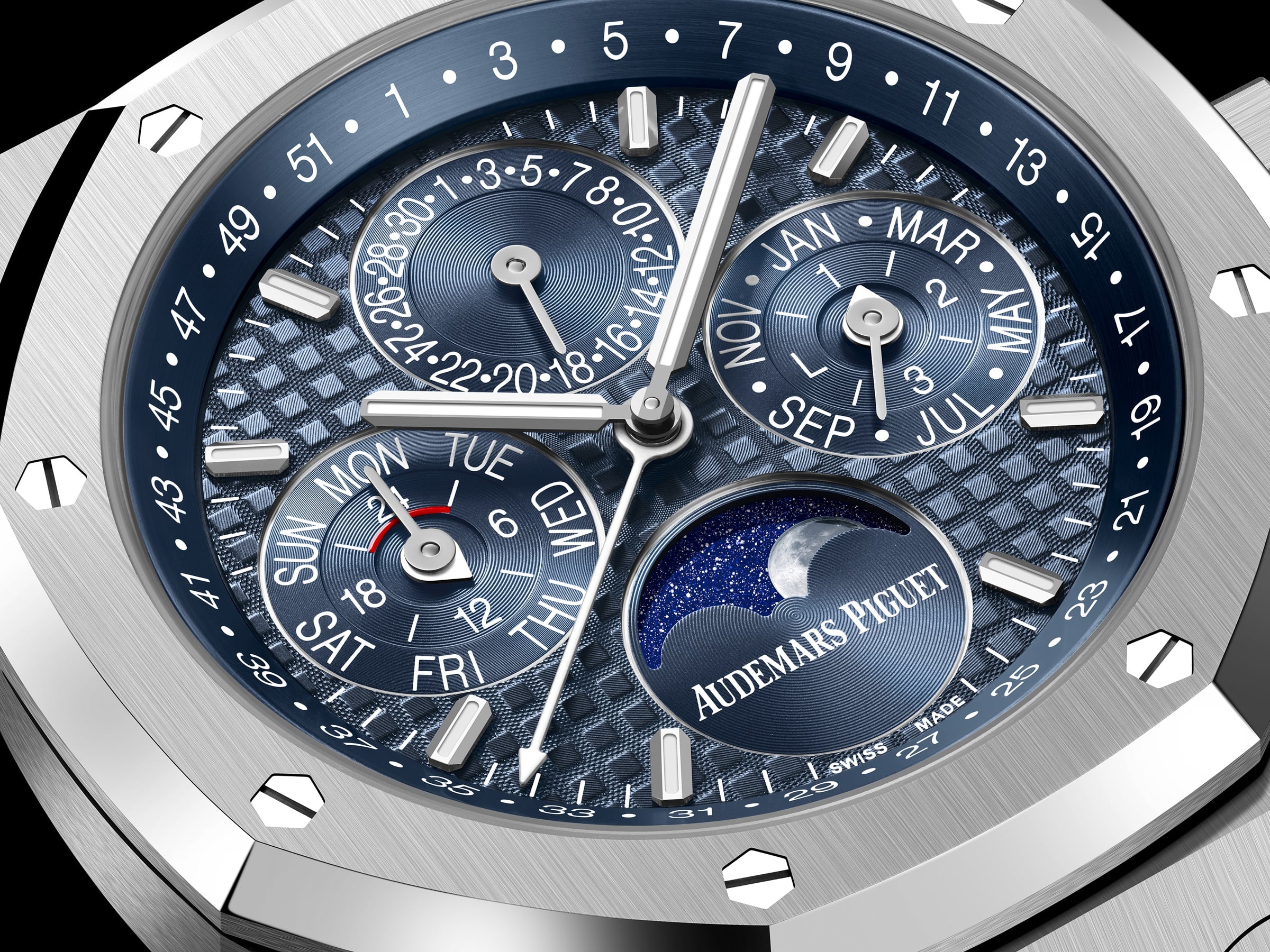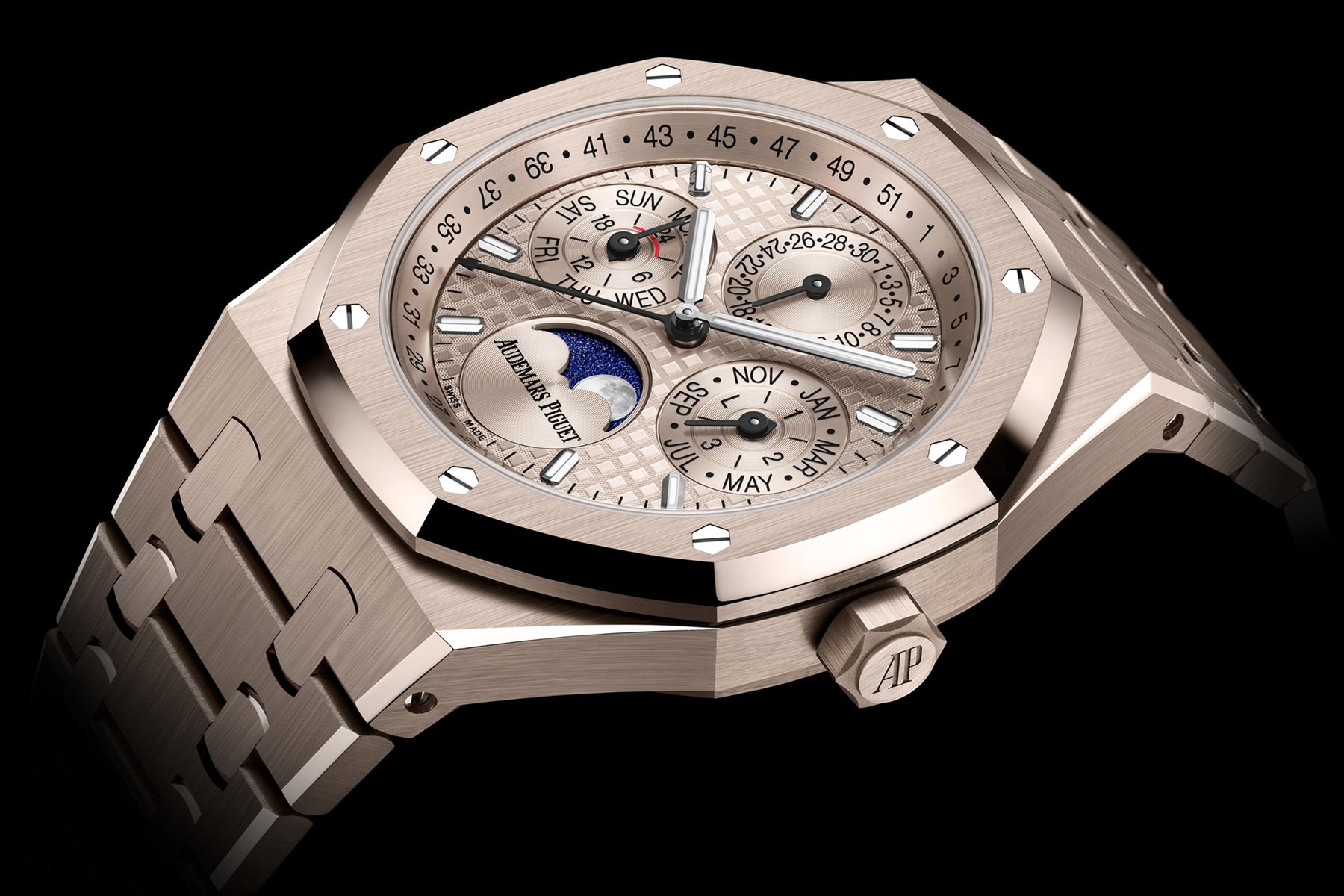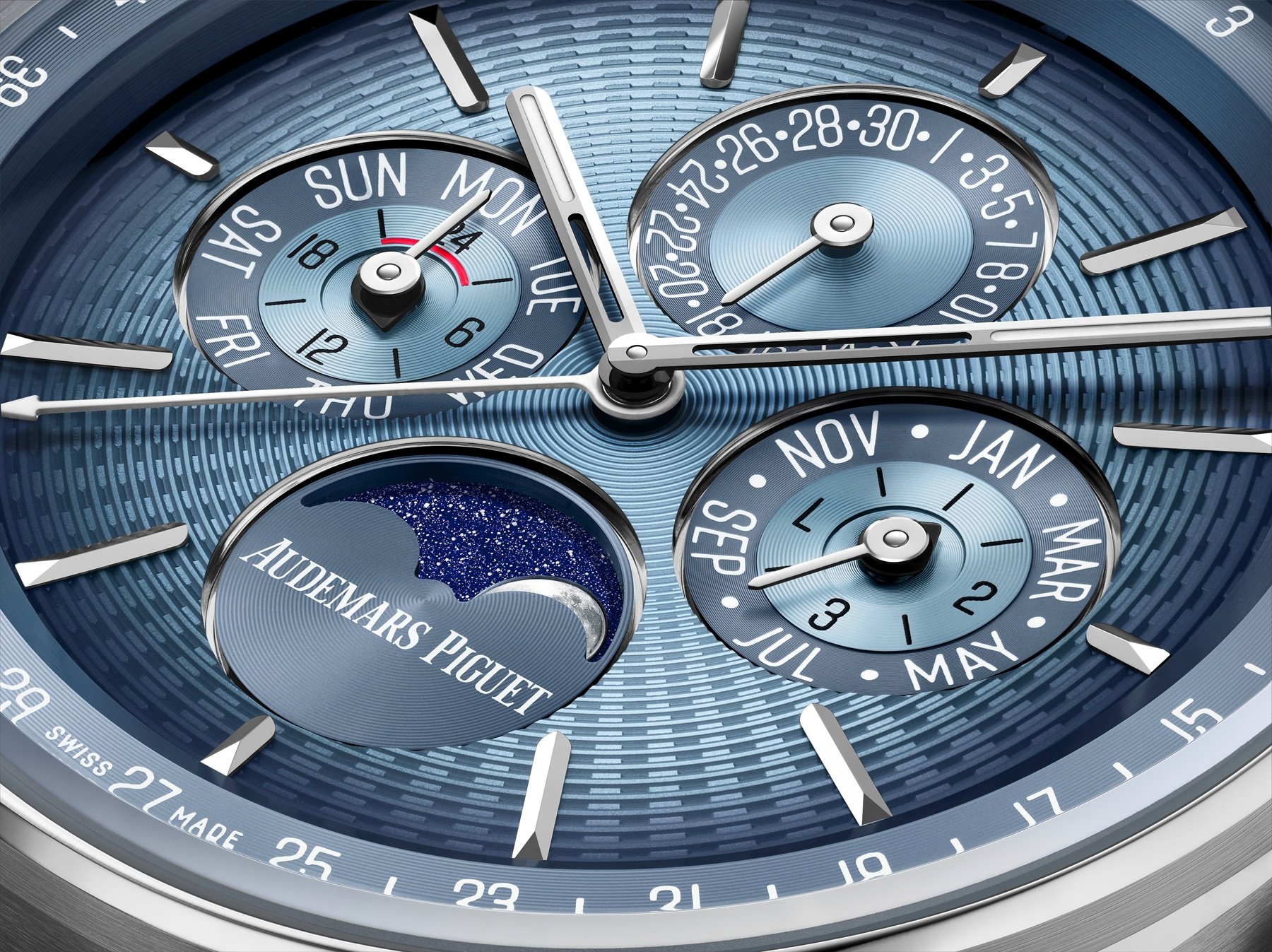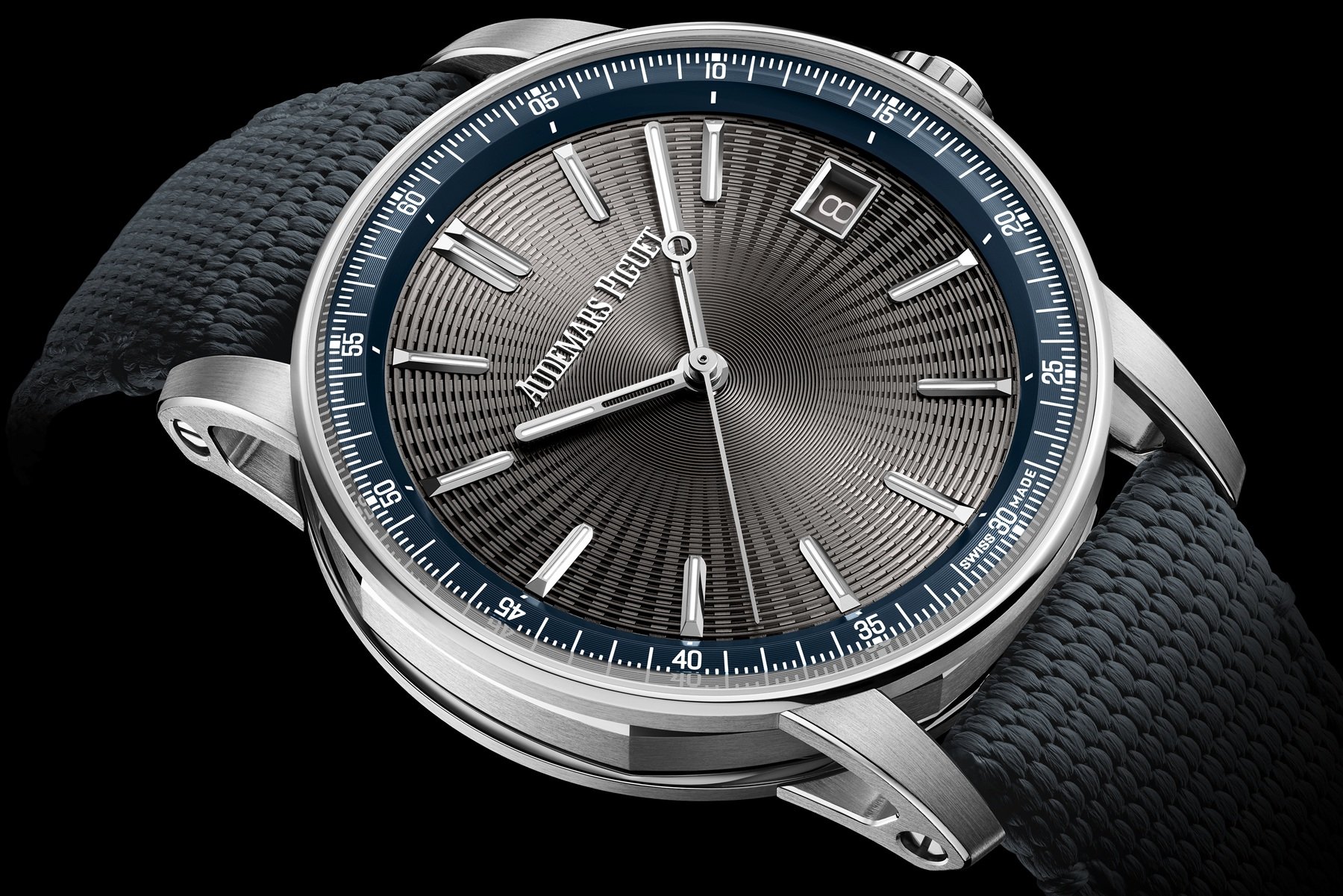Introducing All Of Audemars Piguet’s First-Semester Novelties For 2025: New Perpetual Calendars, Ceramic Offshore Variants, And Three Code 11.59 Models
Do you like themed parties? I’m not a huge fan but, as they say, different strokes for different folks. Audemars Piguet celebrates its 150th anniversary this year, and although such a monumental moment in the brand’s history could well do without a theme, there is one. The theme “AP” picked and explored is ergonomics. It sounds boring, right? Wait until you see what the brand has in store. So, let’s get this party started by introducing all of Audemars Piguet’s first-semester novelties, including a new ergonomically advanced perpetual calendar movement in the Royal Oak and Code 11.59 collection.
The perpetual calendar is a complicated classic, and Audemars Piguet has many decades of experience creating “QPs.” For instance, in 1948, the brand from Le Brassus released its first perpetual calendar wristwatch. Nine out of the 12 ref. 5516 timepieces produced were the first perpetual calendar wristwatches to indicate the leap year on the dial. It seems logical to mark the start of the brand’s 150th-anniversary celebrations by unveiling the new self-winding perpetual calendar caliber 7138. This movement is easier to operate, and the calendar functions on the dial are easier to read. Let’s start with the operational side of things — the all-in-one crown that does away with the correctors on the side of the case.
Introducing all of Audemars Piguet’s first-semester novelties for 2025 — The new QPs kick off the celebrations
Three new references have undergone the AP ergonomics treatment — a 41mm × 10.6mm Code 11.59 in 18K white gold (26494BC.OO.D350KB.01/€109,800) and two 41mm × 9.5mm Royal Oak models in either steel (26674ST.OO.1320ST.01/€109,800) or 18K sand gold (26674SG.OO.1320SG.01/CHF130,000 excluding VAT). There are also three corresponding “anniversary” limited editions of 150 pieces showing a cursive brand logo and bearing an anniversary rotor.
It all starts with the 4.1mm-thick, 422-part caliber 7138, an automatic perpetual calendar movement that took five years to develop and is protected by five patents. The new 4Hz movement doesn’t need clumsy correctors on the side of the case. Instead, a crown takes care of everything. It needs four positions to adjust all the functions. The first position winds the watch clockwise. In the second position, the crown sets the date when turned clockwise, and you can adjust the month and the leap year by turning it in the opposite direction.
Pulling out the crown further and into the third position, the time can be manipulated bidirectionally. When pushing the crown back in one click, you reach the fourth and last position. The crown is now in position 2’, so to speak, and because of an ingenious gearbox system, you can now set the day and week clockwise and the moon phases counterclockwise. The system works very intuitively and easily, but that’s because of the complex mechanism driven by an innovative lever and wandering wheels that mesh with the different calendar wheels in the 2 and 2’ positions. One patent protects the crown correction system with a 2’ position and another the month and date correction via the crown.
From America to Europe
The calendar’s readability was also the subject of ergonomic improvement — at least for some wearers. Now the dial features a European date display instead of the American one. Because of this, the day display is at 9 o’clock, the date is at 12, and the month is at 3. The week numbers are printed on the inner bezel like in previous perpetual calendar models. Because everything normally starts with “1”, AP applied that logic to the QP. So now the first week of the year (“1”) appears at 12. Similarly, “Monday” and “1” have been aligned at 12 o’clock in their respective sub-dials to mark the start of the week and the first day of the month.
Logic in the sub-dials
When you look at the sub-dial at 12 displaying the date, you may notice that the numerals surrounding it look less cramped. The numbers are more evenly spaced, which adds to the readability. To achieve this, AP developed a date wheel with 31 custom-made teeth. Not only do the sizes of the teeth vary, but so do the shapes and depth. There’s also a lot happening in the sub-dial at 3 o’clock. This sub-dial indicates both the month and leap year. The sub-dial at 9 o’clock also shows more than one indication. It doubles as a 24-hour indicator and shows a red no-correction zone telling you that, between 21h and 3h, the watch shouldn’t be set. If you still try, no biggie. The date might not change, but you won’t damage the movement.
What would a perpetual calendar be without a moonphase indicator, the most romantic function? There’s nothing very new here in the sub-dial at 6 o’clock, but the full moon is now centered on the 12 o’clock axis for better aesthetic balance. If you want to know more about the new QP watches, there’s a more in-depth article planned for later this week.
Royal Oak Perpetual Calendar Openworked “150th Anniversary” — The last of its kind
The Royal Oak Perpetual Calendar Openworked “150th Anniversary” (ref. 26585XT.OO.1220XT.01/CHF 175,000 excluding VAT) is a limited edition of 150 watches. It’s also the last of its kind. What you see here is the final watch featuring the Audemars Piguet caliber 5135. This 41mm × 9.9mm model has a case and bracelet in titanium and Bulk Metallic Glass (BMG).
This lightweight watch’s skeletonized dial is a modern interpretation of a pocket watch exhibited in the Musée Atelier Audemars Piguet (ref. 25729).
Royal Oak Offshore Selfwinding Chronograph 41mm — An evolved “The Beast” and something in green
“The Beast” is back. Again. In 2023, AP introduced the Royal Oak Offshore Selfwinding Chronograph (ref. 26238CE.OO.1300CE.01/€87,400) with a Petite Tapisserie dial. It was the brand’s first watch with a black ceramic case and a matching bracelet. Get it while you can because AP discontinued it in favor of a monochromatic version with a Mega Tapisserie dial. Inside ref. 26238CE.OO.1300CE.02’s black ceramic 42mm × 15.3mm case beats the 433-part caliber 4404. This is Audemars Piguet’s integrated, in-house chronograph movement with a flyback function and a 70-hour power reserve. The watch shows classic round pushers, a detail that harks back to the original from 1993.
Ref. 26420CE.OO.A063VE.01 (€58,700) is the new 43mm × 14.4mm Royal Oak Offshore Selfwinding Chronograph with a black ceramic mid-case and a green ceramic bezel, pushers, and screw-down crown. Caliber 4401 sits inside this watch’s 100m-water-resistant case.
Three new Code 11.59 models
The Code 11.59 by Audemars Piguet Selfwinding Flying Tourbillon (26665SG.ZZ.D209CR.01/price on request) is the most festive new Code 11.59, featuring 235 brilliant-cut diamonds (approximately 1.2 carats) adorning the mid-case, lugs, and crown. Inside the 38mm × 9.6mm 18K sand gold case beats the first automatic flying tourbillon movement from AP, the ultra-thin RD#3 movement caliber 2969.
Rounding off AP’s first-semester novelties are two new color variations on an existing theme. Both 41mm Code 11.59 watches feature a dial and strap introducing a new shade of gray, which subtly contrasts with the details in AP’s famous “Blue Nuit, Nuage 50” hue. There’s the 41mm × 10.7mm Selfwinding (ref. 15210ST.OO.A009KB.01/€26,600) with the recently updated dial pattern, indexes replacing numerals, and lively flange. And there’s also the 41mm × 12.6mm Selfwinding Chronograph (ref. 26393ST.OO.A009KB.01/€36,200) — yes, the chronograph is thicker than the QP version.
As of now, we’re still waiting on info about the prices of these first-semester novelties from Audemars Piguet. As soon as we hear anything, we’ll update this article. In the meantime, though, what do you think? Do you see anything you like or want among these releases, or will you sit tight and wait for what comes in the rest of this anniversary year?






















